欢迎访问我的GitHub
https://github.com/zq2599/blog_demos
内容:所有原创文章分类汇总及配套源码,涉及Java、Docker、Kubernetes、DevOPS等;
概览
- 本文是《Kubernetes官方java客户端》系列的第六篇,以下提到的java客户端都是指client-jar.jar;
- 前文《Kubernetes官方java客户端之五:proto基本操作 》已经提到,java客户端的基本功能由两个主要脉络组成,第一个是proto,主要功能是使用ProtoClient类提供的增删改查接口,这些接口用到的入参和返回对象所涉及到的java类,都是通过K8S的protobuf生成的;
- 除了使用ProtoClient对K8S资源进行增删改查,还提供了另一种更强大的方式:OpenAPI,本章咱们就来一起学习OpenAPI相关的操作;
K8S的OpenAPI
-
先抛开java客户端不提,咱们来看看K8S本身的OpenAPI,地址是:https://kubernetes.io/zh/docs/concepts/overview/kubernetes-api/ ,关键信息如下图所示,可见K8S提供了OpenAPI规范:
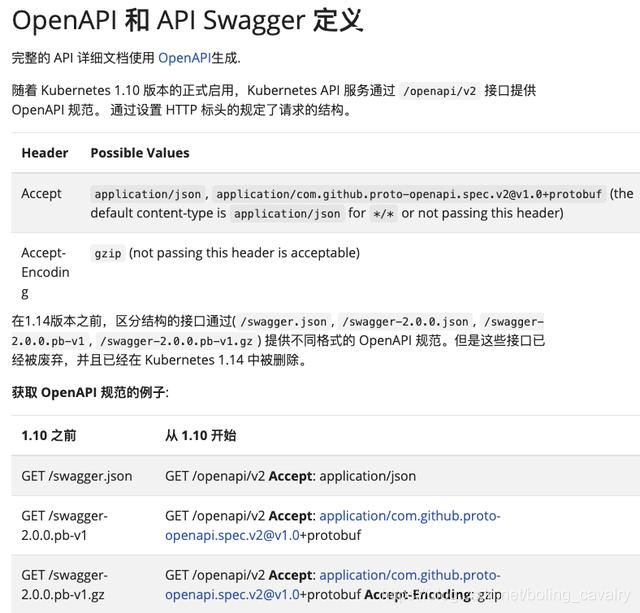
-
如果您想查看当前K8S环境的OpenAPI规范,请打开K8S环境的/etc/kubernetes/manifests/kube-apiserver.yaml文件,增加下图红框中的内容:
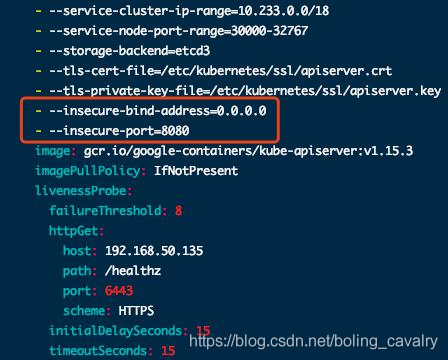
-
修改完毕后请稍候,系统会根据文件的变化自动更新(千万不要执行kubectl apply -f kube-apiserver.yaml,这会导致新建api-server的pod,由于端口占用而启动失败);
-
假设宿主机IP地址是192.168.50.135,那么在浏览器上访问:http://192.168.50.135:8080/openapi/v2,就能得到所有OpenAPI信息如下图:

-
上图的原始数据没有可读性,复制到在线JSON格式化网站,得到的内容如下图,例如查询pod列表的API信息已经非常详细了:
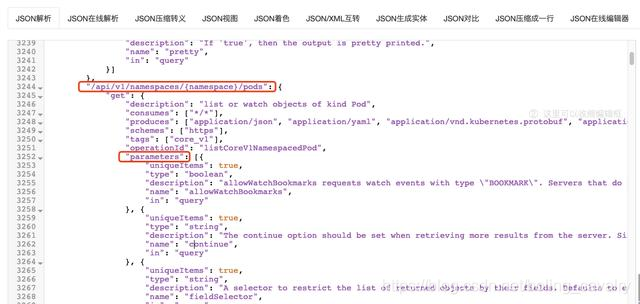
-
以上就是对K8S的OpenAPI简介,接下来回到java客户端本身,看看它提供了哪些OpenAPI相关的能力;
java客户端的OpenAPI
-
打开java客户端工程的源码如下图,红框1就是和OpenAPI相关的子工程,提供服务的功能类都在红框2的package中,也就是说,依靠红框2中的API以及红框3中的数据结构,我们可以完成大部分K8S资源控制相关的操作:

-
打开常用的CoreV1Api.java,如下图红框,顶部的注释已经说明了一切:这些代码都是工具生成的(至于如何生成就不在本文中讨论了):
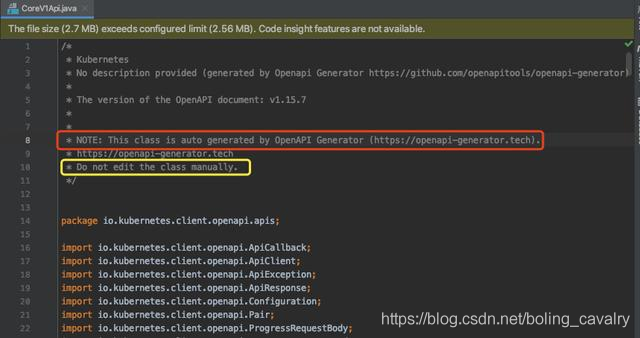
-
如果您下载了java客户端源码,可以在client-java-api这个子工程中看到完整的OpenAPI接口文档:
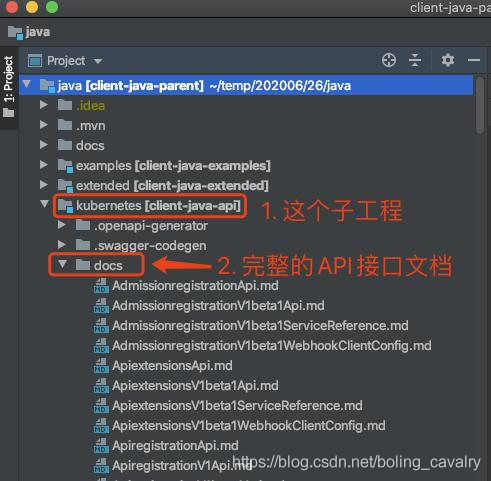
-
前文《Kubernetes官方java客户端之五:proto基本操作 》的代码中,咱们尝试过获取pod列表,但是ProtoClient的已有API不支持提交更详细的业务参数,此时选择OpenAPI接口即可输入详细的业务参数,接口详细信息可以在文档中查到,还带有完整的demo代码,如下图所示:
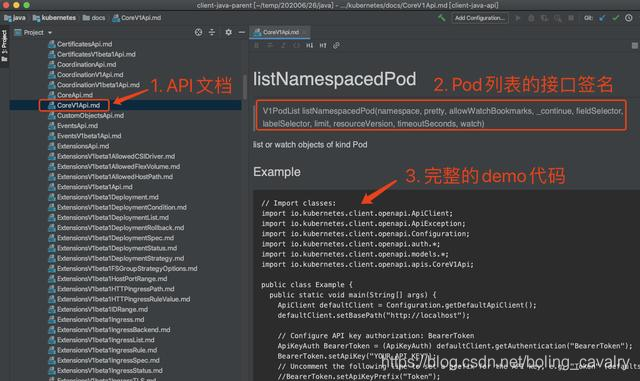
-
上图中的listNamespacedPod接口有两个重要参数:fieldSelector和labelSelector,这是过滤用的,详细的用法请参考K8S官方文档,地址是:https://kubernetes.io/docs/concepts/overview/working-with-objects/ ,如下图红框:
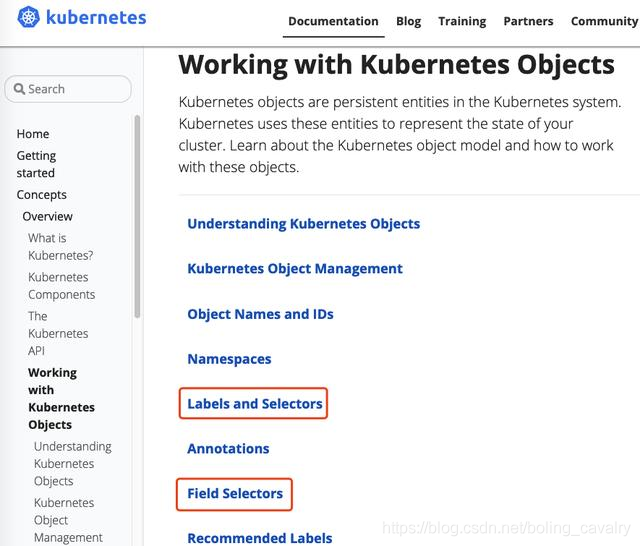
-
弄清楚了K8S的OpenAPI规范,以及java客户端依据此规范生成的API服务,还有详细的接口文档在手,可以编码实战了;
源码下载
- 如果您不想编码,可以在GitHub下载所有源码,地址和链接信息如下表所示(https://github.com/zq2599/blog_demos):
| 名称 | 链接 | 备注 |
|---|---|---|
| 项目主页 | https://github.com/zq2599/blog_demos | 该项目在GitHub上的主页 |
| git仓库地址(https) | https://github.com/zq2599/blog_demos.git | 该项目源码的仓库地址,https协议 |
| git仓库地址(ssh) | git@github.com:zq2599/blog_demos.git | 该项目源码的仓库地址,ssh协议 |
- 这个git项目中有多个文件夹,本章的应用在kubernetesclient文件夹下,如下图红框所示:
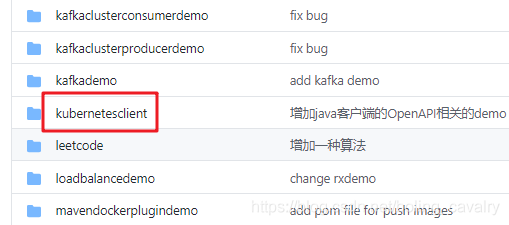
开始编码
- 打开《Kubernetes官方java客户端之一:准备 》中创建的kubernetesclient工程,在里面新建子工程openapi,其pom.xml内容如下,要注意的是spring-boot-starter-json已经被排除,因此序列化工具会变为Gson(原本默认是jackson):
<?xml version="1.0" encoding="UTF-8"?>
<project xmlns="http://maven.apache.org/POM/4.0.0" xmlns:xsi="http://www.w3.org/2001/XMLSchema-instance"
xsi:schemaLocation="http://maven.apache.org/POM/4.0.0 https://maven.apache.org/xsd/maven-4.0.0.xsd">
<modelVersion>4.0.0</modelVersion>
<parent>
<groupId>com.bolingcavalry</groupId>
<artifactId>kubernetesclient</artifactId>
<version>1.0-SNAPSHOT</version>
<relativePath>../pom.xml</relativePath>
</parent>
<groupId>com.bolingcavalry</groupId>
<artifactId>openapi</artifactId>
<version>0.0.1-SNAPSHOT</version>
<name>openapi</name>
<description>Demo project for openapi client</description>
<packaging>jar</packaging>
<dependencies>
<dependency>
<groupId>org.springframework.boot</groupId>
<artifactId>spring-boot-starter-web</artifactId>
<exclusions>
<exclusion>
<groupId>org.springframework.boot</groupId>
<artifactId>spring-boot-starter-json</artifactId>
</exclusion>
</exclusions>
</dependency>
<dependency>
<groupId>org.projectlombok</groupId>
<artifactId>lombok</artifactId>
<optional>true</optional>
</dependency>
<dependency>
<groupId>io.kubernetes</groupId>
<artifactId>client-java</artifactId>
</dependency>
</dependencies>
<build>
<plugins>
<plugin>
<groupId>org.springframework.boot</groupId>
<artifactId>spring-boot-maven-plugin</artifactId>
<version>2.3.0.RELEASE</version>
</plugin>
</plugins>
</build>
</project>
- 新增OpenAPIDemoApplication.java,这是新工程的引导类,也有两个web接口,一个创建namespace,另一个按照namespace查询pod列表,关键位置已添加了注释,就不多赘述了:
package com.bolingcavalry.openapi;
import com.google.gson.GsonBuilder;
import io.kubernetes.client.openapi.ApiClient;
import io.kubernetes.client.openapi.ApiException;
import io.kubernetes.client.openapi.Configuration;
import io.kubernetes.client.openapi.apis.CoreV1Api;
import io.kubernetes.client.openapi.models.V1Namespace;
import io.kubernetes.client.openapi.models.V1NamespaceBuilder;
import io.kubernetes.client.openapi.models.V1PodList;
import io.kubernetes.client.util.ClientBuilder;
import io.kubernetes.client.util.KubeConfig;
import lombok.extern.slf4j.Slf4j;
import org.springframework.boot.SpringApplication;
import org.springframework.boot.autoconfigure.SpringBootApplication;
import org.springframework.web.bind.annotation.PathVariable;
import org.springframework.web.bind.annotation.RequestMapping;
import org.springframework.web.bind.annotation.RequestMethod;
import org.springframework.web.bind.annotation.RestController;
import javax.annotation.PostConstruct;
import java.io.FileReader;
@SpringBootApplication
@RestController
@Slf4j
public class OpenAPIDemoApplication {
public static void main(String[] args) {
SpringApplication.run(OpenAPIDemoApplication.class, args);
}
/**
* 默认的全局设置
* @return
* @throws Exception
*/
@PostConstruct
private void setDefaultApiClient() throws Exception {
// 存放K8S的config文件的全路径
String kubeConfigPath = "/Users/zhaoqin/temp/202007/05/config";
// 以config作为入参创建的client对象,可以访问到K8S的API Server
ApiClient client = ClientBuilder
.kubeconfig(KubeConfig.loadKubeConfig(new FileReader(kubeConfigPath)))
.build();
// 创建操作类
Configuration.setDefaultApiClient(client);
}
@RequestMapping(value = "/openapi/createnamespace/{namespace}", method = RequestMethod.GET)
public V1Namespace createnamespace(@PathVariable("namespace") String namespace) throws Exception {
CoreV1Api coreV1Api = new CoreV1Api();
V1Namespace v1Namespace = new V1NamespaceBuilder()
.withNewMetadata()
.withName(namespace)
.endMetadata()
.build();
V1Namespace ns = coreV1Api.createNamespace(v1Namespace, null, null, null);
// 使用Gson将集合对象序列化成JSON,在日志中打印出来
log.info("ns info
{}", new GsonBuilder().setPrettyPrinting().create().toJson(ns));
return ns;
}
@RequestMapping(value = "/openapi/pods/{namespace}", method = RequestMethod.GET)
public V1PodList pods(@PathVariable("namespace") String namespace) throws ApiException {
CoreV1Api apiInstance = new CoreV1Api();
// String | If 'true', then the output is pretty printed.
String pretty = null;
// 订阅事件相关的参数,这里用不上
Boolean allowWatchBookmarks = false;
// 连续查找的标志,类似于翻页
String _continue = null;
// 字段选择器
String fieldSelector = "status.phase=Running";
// 根据标签过滤
// String labelSelector = "component=kube-apiserver";
String labelSelector = null;
Integer limit = null;
String resourceVersion = null;
Integer timeoutSeconds = null;
Boolean watch = false;
V1PodList v1PodList = apiInstance.listNamespacedPod(namespace,
pretty,
allowWatchBookmarks,
_continue,
fieldSelector,
labelSelector,
limit,
resourceVersion,
timeoutSeconds,
watch);
// 使用Gson将集合对象序列化成JSON,在日志中打印出来
log.info("pod info
{}", new GsonBuilder().setPrettyPrinting().create().toJson(v1PodList));
return v1PodList;
}
}
-
将OpenAPIDemoApplication运行起来,先测试创建namespace的服务,在浏览器访问:http://localhost:8080/openapi/createnamespace/dddeeefff ,浏览器返回信息如下图:
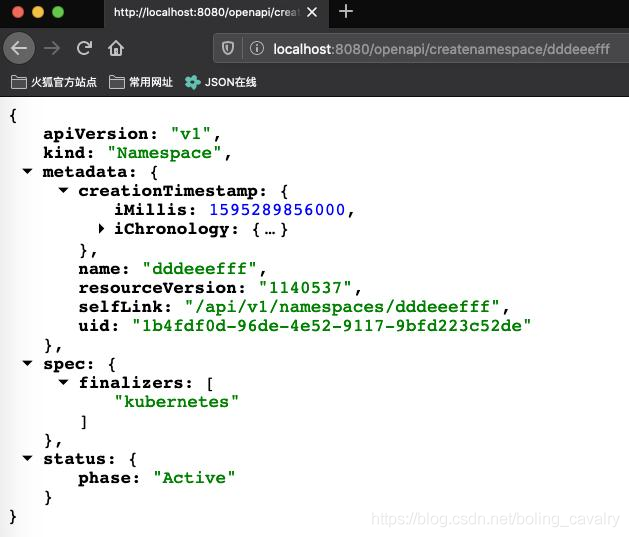
-
SSH登录K8S主机,执行命令查看namespace,如下图红框,已经创建成功:
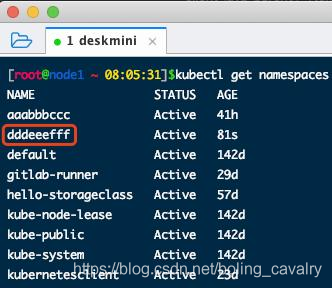
- 再试试Pod列表,地址是 :http://localhost:8080/openapi/pods/kube-system ,如下图:
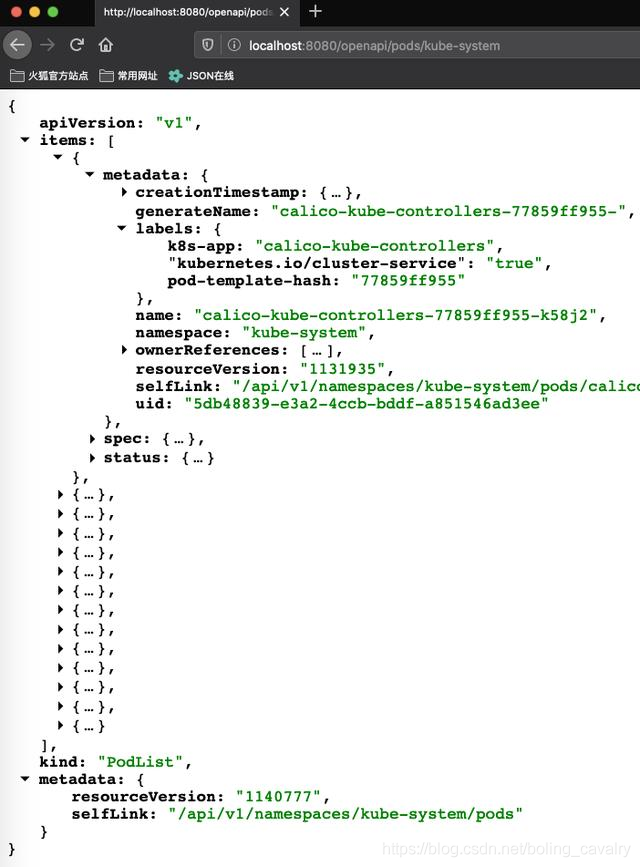
- 至此,OpenAPI接口的实践就完成了,现在已将java客户端的最基本的功能都实践过了,接下来的文章咱们将开始学习精彩的高级功能;
你不孤单,欣宸原创一路相伴
欢迎关注公众号:程序员欣宸
微信搜索「程序员欣宸」,我是欣宸,期待与您一同畅游Java世界...
https://github.com/zq2599/blog_demos